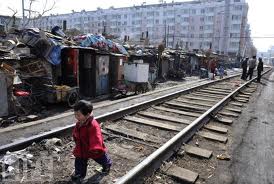For the past week I keep hearing about the drugs shortage, and by that, I don’t mean the recreational type of drugs. No, it’s about the medication any of us might need at some point: antibiotics, painkillers, etc.
First I heard that Romanians used the shortage to criticize again their government. Then I heard that the shortage is here in Canada as well. Why?
From Canadian Press: “The issue was to be the subject of an emergency debate in the House of Commons on Monday evening.
The problem of drug shortages has been increasing over the last year, both in Canada and elsewhere. But the problem hit a crisis point recently when Sandoz Canada had to temporarily shut down its plant at Boucherville, Que., to make upgrades in response to complaints about the plant from the U.S. Food and Drug Administration.
The plant, which makes 90 per cent of the injectable drugs used in Canada, experienced a fire during the upgrade process. The plant is expected to resume production in the near future.
Requiring manufacturers to alert the government to pending shortages would allow all jurisdictions to better co-ordinate distribution of scarce available supplies, Demers said”
From Alberta Health Services: “Sandoz Canada recently advised health authorities across Canada to expect reduced availability of a number of different types of injectable drugs over the next 12 to 18 months as they reengineer their production processes to meet manufacturing regulations.
Some products will be discontinued, while the production of others will be temporarily suspended and reintroduced when plant capacity improves. Many of these injectable products are not readily available from other sources and are critical to the provision of patient care”
From The Globe and Mail: “Injectable drugs are so scarce in Canada that doctors across the country are being forced to restrict their use and depart from standard hospital practices.
Some hospitals are urging physicians to hold onto vials containing leftover medicine, instead of throwing them out after a single use. Cancer patients in Alberta have been switched from faster-acting injectable anti-nausea drugs to oral alternatives, and, in Ontario, at least one hospital has suggested staff consider low doses of more potent painkillers as supplies of commonly used drugs like morphine run low”
From the same The Globe and Mail, an article published November 6, 2011 reads:” Medications in short supply in recent months include antibiotics, heart drugs, antidepressants and others. But there have also been emerging shortages of chemotherapy drugs and medications used to anesthetize patients, which has been a source of major concern in the health community.
The pharmaceutical industry says that reasons for the shortages have nothing to do with market manipulation (emphasized by me), but that they are complex and varied, such as contamination or unavailability of important raw ingredients, regulatory problems, safety issues with manufacturing plants, or a sudden and unexpected increase in demand for a particular drug.
Some experts, however, suspect the problem is actually much simpler and may hinge on whether the drugs in question can generate enough sales to make them viable to the company selling them.
The vast majority of drugs that have been in shortage are older generic drugs, which are much cheaper and often in less demand than newer drugs. In some instances, alternatives to these unavailable drugs are more expensive brand-name medications.
A analysis published last week in the New England Journal of Medicine raised serious questions about the fact that most supply problems seem to revolve around inexpensive older drugs that likely don’t generate significant revenue.
“The main cause of the drug shortage is economic,” wrote authors Mandy Gatesman of the Virginia Commonwealth University Health System and Thomas Smith of the Sidney Kimmel Comprehensive Cancer Center at Johns Hopkins Medicine. “If manufacturers don’t make enough profit, they won’t make generic drugs.”
The analysis cites the example of paclitaxel, an important chemotherapy drug that has been in shortage in the U.S. The alternative, Abraxane, costs 19 times the price of the generic paclitaxel, the authors found.
In an interview, Prof. Gatesman, a clinical pharmacy specialist, said it’s difficult to find another explanation for the fact that shortages are disproportionately affecting generic brands.
“Even though no generic company, as far as I’m aware, has come out and said economics was the reason for shutting anything down, it’s really hard to think that that’s not true,” she said.
It’s a position shared by Jacalyn Duffin, a hematologist and medical historian at Queen’s University in Kingston, Ont. Dr. Duffin launched a website last year to raise awareness of drug shortage problems after one of her cancer patients was unable to get a prescription for an anti-nausea drug filled. She fears that drug manufacturers may simply be phasing out older, less expensive drugs, which would force patients and the health-care system to pay more for newer drugs, she said.
“They’re just letting those drugs go away,” Dr. Duffin said. “The bottom line for patients is to expect more shortages and it could be shortages of really significant drugs like chemotherapy drugs.”
The president of the largest Canadian-owned pharmaceutical company, Apotex, which produces generics, said there is no truth to any claims about shortages being the result of economics. Jack Kay said a major problem is the difficulty in sourcing good active ingredients that meet Canadian standards. Generic companies rely on third parties for active ingredients, which means they are at the mercy of supply-chain glitches, contamination issues and other problems that can result in lengthy drug shortages.
This can be a particular problem for older drugs because the active ingredient may only be produced by a few third parties, Mr. Kay said.
“I think it’s important for Canadians to know there is no manipulation going on here,” he said.
Jeff Connell, vice-president of corporate affairs for the Canadian Generic Pharmaceutical Association, which represents makers of generic drugs, said in an e-mail he knows of “no instance in the Canadian market of a shortage due to the withdrawal of a drug product based on it being unprofitable.”
A statement on the organization’s website says it is working with various partners to find ways to mitigate the impact of shortages on patients. The association also says generic companies in Canada are enacting a host of measures, including investing nearly $100-million over the next three years in new facilities, equipment, systems and staff and allocating more resources to quality control and assurance operations in order to comply with the standards of Health Canada and other regulatory agencies.
Russell Williams, president of Canada’s Research-Based Pharmaceutical Companies, which represents companies selling brand-name drugs, said the industry is dedicated to addressing shortages and working to set up the national monitoring database”
Fast forward from November 2011 to March 2012 and what do we have? Drugs shortages.
All right, now some light was shed in regards to Sandoz. It’s the U.S. Food and Drug Administration’s fault. They asked for ‘upgrades’. If Health Canada did not find anything wrong with Sandoz, why did they have to bow down under U.S. pressure? Another disturbing information: apparently Canadian hospitals are not allowed to stockpile medication. What??!!!
I wonder how much the needed medication is going to cost on the black market?
Moving on with another article, this time from LA Times : “Imagine that you had a type of cancer that could be cured with chemotherapy – but supplies of the drug were limited, and you might not get it.
This is the scenario facing an unknown number of patients who normally would depend on drugs like paclitaxel (Taxol), doxorubicin (Doxil), vincristine (Oncovin), methotrexate(Trexall, Rheumatrex), leucovorin and bleomycin (Blenoxane). On Monday, President Obama signed an executive order directing the Food and Drug Administration to take steps to help resolve such shortages. Among them: speed up reviews of new drug-manufacturing facilities and get companies to report shortages earlier, when regulators can do more to manage limited supplies”
Even if you are not a fan of conspiracy theory, when you start connecting the dots some interesting picture starts to emerge.
First of all, here in Canada, we are taxed like it’s no tomorrow. Our cost of living escalated to a level never seen before- at least not by me. 10 years ago we lived comfortably with pretty decent salaries. Now, our salaries are the same as 10 years ago, while everything else increased a lot. Let’s take the gas at the pump. It used to be $0.30, now it’s $1.30. Along with that, the food cost increased. Everything that means the day-to-day life it’s much more expensive than 10 years ago.Meaning that less disposable income for good and healthy food. Meaning that people eat crap and it’s only normal that in 10 year span they develop various illnesses and resistance to antibiotics (see hormones and antibiotics in meat). Add to that genetically modified fruits and veggies. There you go. OK, first step in the agenda of getting rid of part of human population has been accomplished. People are sick. Next step: lets make sure that they don’t have medication or access to medication. And if it’s still not successful, let’s nuke them. I mean, us.







